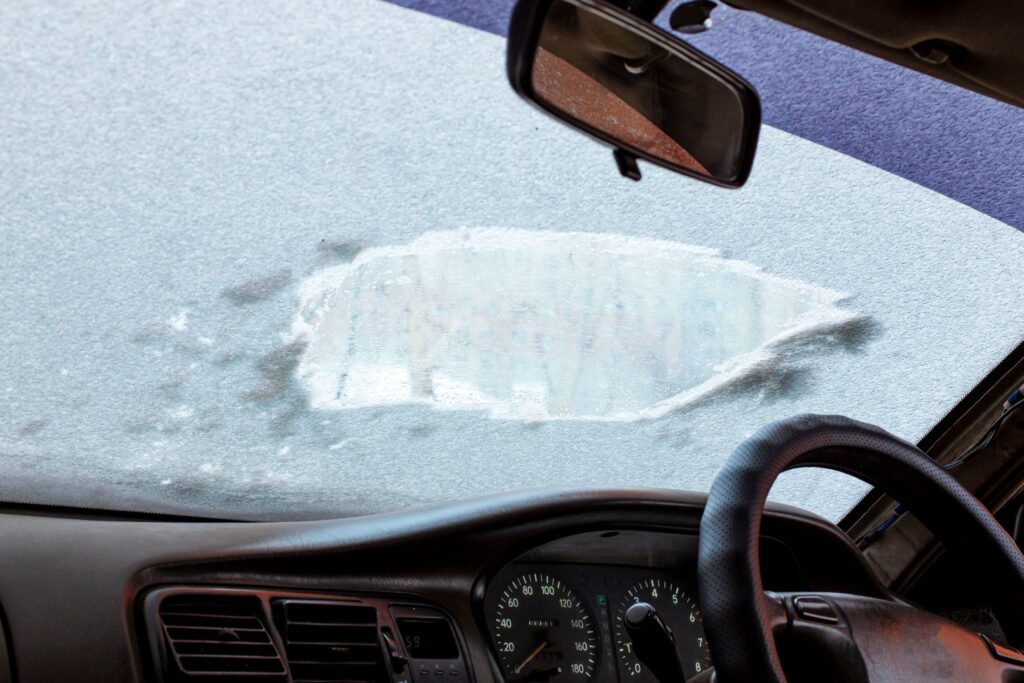As the temperature drops and winter sets in, a functioning car heater becomes essential for comfort and safety during your drives. When your car’s heating system suddenly stops working, it can be frustrating and uncomfortable. Check out the common causes of heating system issues and read our step-by-step guide on what to do when your car’s heating stops working.

Common Causes of Car Heating Problems
Before we delve into the steps to take when your car’s heating system fails, let’s briefly discuss some common causes of heating issues:
- Coolant Problems: A low coolant level or issues with the coolant system can affect the heater’s performance. Coolant is responsible for transferring heat to the cabin.
- Thermostat Malfunction: The thermostat regulates the flow of coolant through the heater core. A malfunctioning thermostat can cause inconsistent heating.
- Heater Core Issues: The heater core is responsible for warming the air that enters the cabin. If it’s clogged, leaking, or damaged, your heating system may not work correctly.
- Blower Motor Problems: The blower motor is responsible for blowing air into the cabin. A malfunctioning blower motor can lead to reduced airflow or complete heating system failure.
- Blend Door Actuator: The blend door actuator controls the temperature by regulating the mix of hot and cold air. If it fails, you may experience temperature control problems.
What to Do When Your Car’s Heating Stops Working
- Check the Thermostat: Start by ensuring that your car’s thermostat is set to the desired temperature. Sometimes, a simple adjustment can resolve heating issues.
- Monitor the Temperature Gauge: Keep an eye on your car’s temperature gauge. If it reads abnormally high or low, it may indicate a coolant problem. Check the coolant level and top it off if necessary.
- Inspect for Leaks: Look for any signs of coolant leaks under your car. Puddles or stains on the ground may indicate a leaking radiator, hose, or heater core.
- Check the Blower Motor: If you don’t feel any air coming from the vents, the blower motor may be the culprit. Listen for unusual noises, which could suggest a malfunction. You may need to replace the blower motor if it’s faulty.
- Examine the Heater Core: If your vents are blowing cold air, a clogged or damaged heater core may be the issue. A professional mechanic can inspect and replace it if necessary.
- Test the Blend Door Actuator: If you’re experiencing temperature control problems, the blend door actuator may need attention. It can often be accessed by removing the dashboard, so consult your vehicle’s manual or seek professional help.
- Consult a Mechanic: If the issue remains unresolved after performing these checks, it’s advisable to consult a qualified mechanic or heating system specialist. They can conduct a comprehensive inspection, diagnose the problem accurately, and recommend the necessary repairs or replacements.
- Consider a Coolant Flush: If the heater problems were related to coolant issues, consider getting a coolant system flush and refill to ensure proper circulation.
Keeping Your Car Comfortable All Year Long
When your car’s heating stops working, turn to the automotive experts at Ken’s Automotive & Transmissions. Whether it’s a simple adjustment or a more complex issue, we’ll find the root cause of your car’s heating problems and promptly address it to ensure your safety, comfort, and peace of mind during winter drives. Contact us now to schedule an appointment.














